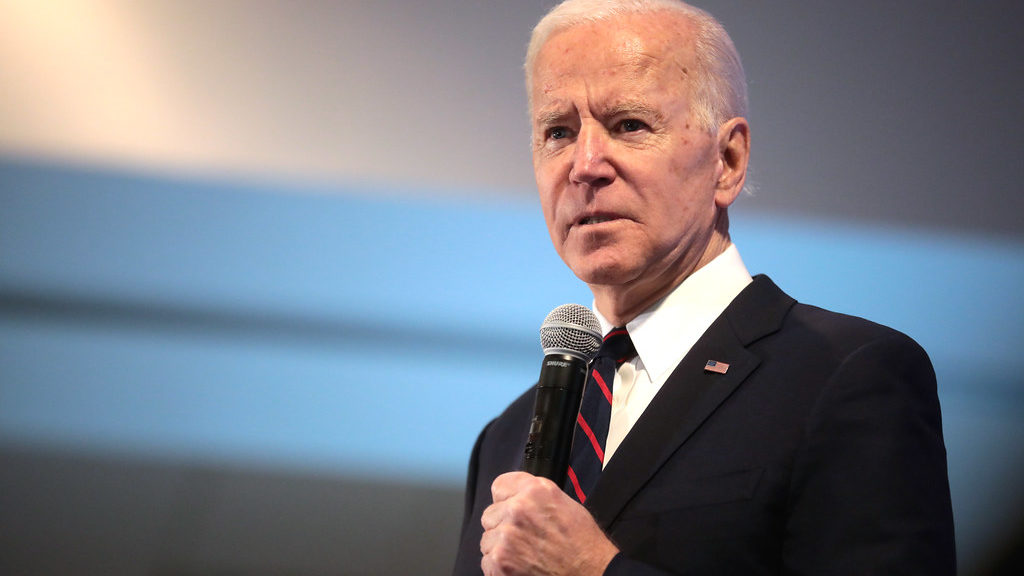
In Minnesota, Fresh Energy is working to make progress on clean energy at the legislative, agency, and community levels. Sometimes it feels like we’re building significant momentum toward meeting Minnesota’s climate goals and clean energy potential, while other times the political barriers to economy-wide decarbonizing feel overwhelming. However, in late March, the White House published its ambitious—and totally achievable—American Jobs Plan, the backbone of which is clean energy jobs and infrastructure.
As Fresh Energy staff pored over the plan, there were aspects of it that really stood out, so we wanted to take some time to share with Fresh Energy supporters what we’re most excited about—and where we hope the Biden Administration will focus additional effort.
Before we dive in, it’s important to note that the American Jobs Plan is what federal leadership on clean energy and energy-related economic development should look like. There hasn’t been a federal investment in infrastructure on this scale in decades, and this plan signals to the world that the United States is ready to rejoin the global movement to advance clean energy and equitable decarbonization.
Ultimately, the American Jobs Plan takes critical and bold steps forward for clean energy, environmental justice, and our climate. However, there’s still room for the plan to become even more powerful. Let’s dive in!
Jobs, Economic Development, and Tax Updates

Creation of millions of good jobs across the U.S. economy, but because of the Plan’s focus on clean energy infrastructure, many of those jobs fall in the energy sector. The American Jobs Plan would create jobs in energy efficiency and weatherization, electrical line construction and upgrades, battery and electric vehicle assembly, and more. The Plan also emphasizes the creation of good-paying jobs, with a choice to join a union and bargain collectively.
Block grants to state, local, and tribal governments to support clean energy, environmental justice, and job creation programs and projects across the country.
Centering environmental justice by targeting 40 percent of the climate and infrastructure benefits to under-resourced communities. The American Jobs Plan seeks to remedy historical injustices by reconnecting neighborhoods that were impacted by past efforts such as the Interstate Highway System, proposes replacement of all the nation’s lead pipes and service lines, and invests in resilience strategies in under-resourced communities and communities of color.
Eliminating tax subsidies for fossil fuel infrastructure will curtail investments in last century’s outdated energy that the United States can’t afford.
Clean Power
Federal government leads by example by committing to 24/7 clean power for federal buildings and electrifying its own vehicle fleet including the United States Postal Service.
Establishing a national Clean Electricity Standard (CES) for utilities and grid operators that aims for carbon pollution-free electricity generation. This is a once-in-a-generation opportunity—a technology-neutral Clean Electricity Standard that would achieve a 100% carbon pollution-free power sector by 2035. The passage of such a national standard is critical to advancing robust transmission planning and development and end-use electrification. A national CES would put the United States at the forefront of technology innovation and become the single most important climate policy of the Biden era. We believe that under a legally-binding national CES, MISO (our grid operator) would plan for the transmission necessary to support it and share the costs more evenly across all the beneficiaries on our grid. An updated, highly interconnected electricity grid would accelerate decarbonization across energy sectors by opening up access to abundant affordable, reliable, clean power for current and future end-uses.
Clean Energy Tax credits for wind, solar, and storage would boost clean energy deployment across the country. And, extending the current tax credits for wind and solar will keep up the momentum for these resources that are already a least-cost way to generate electricity. A new tax credit for battery storage will help accelerate that important market, and a new option for a direct-payment tax credit will make access to the incentives more equitable, reduce transaction costs, and lower the cost of clean energy deployment. Additionally, the proposal includes significant tax credits for the kinds of high-voltage transmission needed to support a carbon-free electric system.
Expansion of our national electric grid. We cannot meet our clean energy and carbon goals without major expansion of our national electric grid. The American Jobs Plan recognizes that federal action—including passage of the Clean Electricity Standard mentioned above—is desperately needed to build this grid infrastructure at the pace and scale that experts recognize is required. New transmission is essential not only for serving our current electricity demand with clean power, but also for facilitating rapid growth in electrification.
Buildings and Energy Efficiency

Broad investments in energy efficiency, including a priority to produce or retrofit more than one million affordable, energy efficient, and electrified housing units to secure energy savings and enable electrification. The proposal also includes energy efficiency investments in public housing, community colleges, and schools.
Deep investment in energy efficient, all-electric affordable housing units. The American Jobs Plan allocates $213 billion to build 2 million energy efficient affordable housing units. This would include passing the Neighborhood Homes Investment Act to build homes in under-served areas, as well as tax credits for all electric, efficient, and affordable housing units.
Identifying heat pumps as a leading technology in the race to meet our 2050 net zero goal, specifically as a champion decarbonization technology across residential heating and commercial buildings. For the first time, heat pumps are elevated right alongside electric vehicles and their chargers, solidifying their crucial importance in the clean energy transition. In the ‘Jumpstart clean energy manufacturing through federal procurement’ heading, the American Jobs Plan allocates $46 billion to enable the manufacture of these cars, ports, pumps, and clean materials.
Transportation

Creating concrete goals for electric vehicle (EV) deployment including spending $174 billion in investments; building 500,000 new EV chargers by 2030; replacing 50,000 diesel buses; and turning at least 20 percent of school buses electric, with a path set to electrify 100 percent of school buses. The administration also recognizes its own role in leading the EV transition, promising to electrify the federal fleet, including those of the US Postal Service. These concrete goals will help guide real action.
Advancing EV access and affordability by including not just consumer tax incentives, which work better for wealthier buyers with larger tax burdens, but also point-of-sale consumer rebates. The plan also focuses on electric buses as much as personal passenger vehicles. These nods to equity are essential first steps to ensuring this plan and the larger transition to electric transportation is done with everyone in mind—not just the wealthiest.
Growing America’s domestic EV manufacturing and prowess, both in terms of the EVs themselves as well as the critical components like batteries and other materials needed to build EVs. Not only will this expand the U.S.’s ability to meet its climate and economic goals, but it will also help the U.S. stay on schedule and be less exposed to overseas supply disruptions, like those currently being seen with semiconductors and new automobiles. In fact, the American Jobs Plan specifically calls out the need to build a more resilient semiconductor supply chain in order to avoid future disruptions to our automobile manufacturing.
Room for Growth
While there’s so much to celebrate, aspects of the American Jobs Plan need more work or expansion, including:
Decarbonizing our entire transportation system. The American Jobs Plan is critical to setting Americans on a path to electrify passenger vehicles and buses and is a great first step—especially as previous infrastructure plans have not even mentioned electric vehicles or charging stations. But, the transportation system is more than passenger vehicles and buses. It is critical that the Biden-Harris Administration address how other parts of the transportation sector might be decarbonized, for instance urban freight at a time when online shopping and home delivery has never been higher.
Labor and supply chain for EVs rightly emphasized but details limited. Building out a domestic supply chain for EVs that includes home-grown manufacturing is a fantastic goal. As with any mining and manufacturing efforts, it will need to be paired with robust labor and environmental standards. These standards will ensure that EV jobs are good, family and community-supporting jobs—and that American-made products are sourced and manufactured with an emphasis on both economic and environmental sustainability.
Clarify benefits and outcomes of clean infrastructure investments. The Plan’s proposal to target 40 percent of the benefits of climate and clean infrastructure investments to under-resourced communities is a good start—but it will be critical to clarify how “benefits” are defined and ensure that those outcomes actually reach the communities they are intended to benefit. Further, thoughtful implementation of the Plan will be necessary to ensure that impacted communities are included in decision-making processes, and to anticipate and prevent any unintended consequences.
Specific prioritization of electrification of end-uses currently served by fossil fuels (such as furnaces and boilers, water heaters, and more) with all building retrofit and efficiency investment as well as specific prioritization of deep energy retrofits in existing buildings in cold climate regions to enable reliable heating through electrification.
Increase Research and Development investments to include utility-scale ground-source district energy heating systems, an area of major potential.
We expect more federal news and announcements in the coming months so stay tuned here for updates! In the meantime, you can stream our recent conversation with U.S. Senator Tina Smith about the Clean Energy Standard and why acting now on climate is critical and how climate action can present economic opportunity for Minnesota. Check it out on our YouTube channel or on our podcast, “Decarbonize: The Clean Energy Podcast” streamable below and available on your favorite podcasting app.
